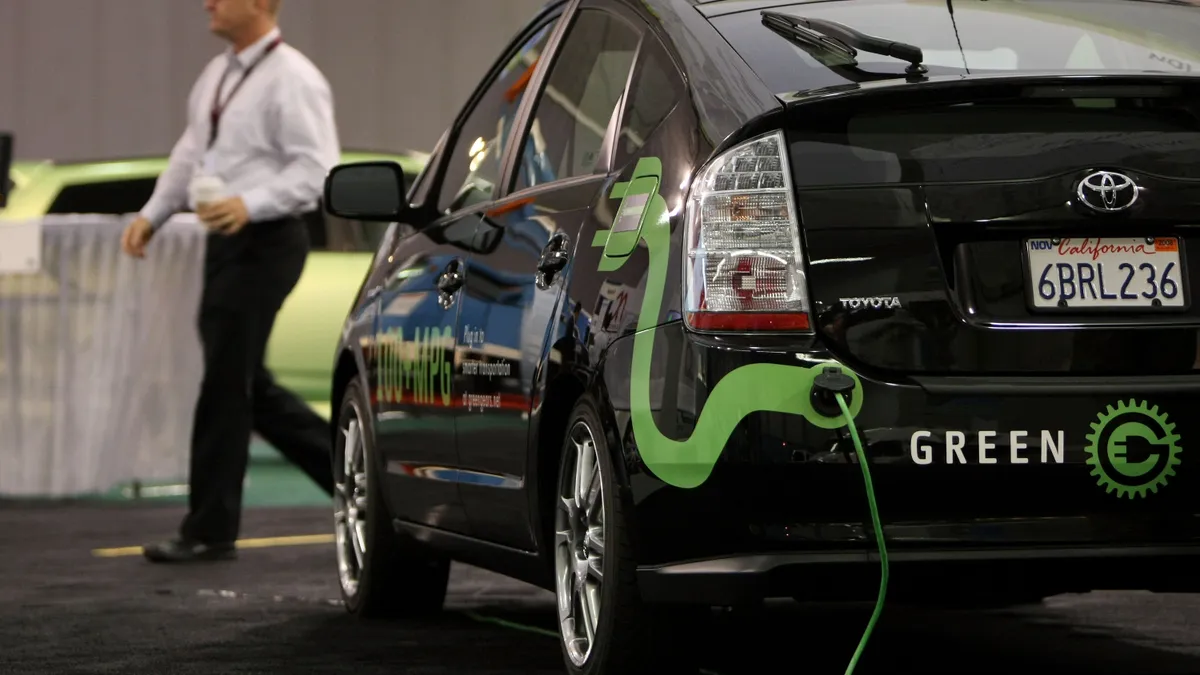Dive Brief:
- The California Energy Commission (CEC) on Monday approved a $1.4 billion plan to push the state closer to its electric vehicle charging and hydrogen refueling goals.
- The move comes more than a year after California Gov. Gavin Newsom, D, issued an executive order that sought to phase out the sale of new gasoline-powered passenger vehicles in the state by 2035. The funding in the new plan will become available over the next two years via a combination of competitive solicitations and direct agreements, according to a commission press release.
- This is "essentially a huge infusion of cash for much needed investments in zero-emission vehicle infrastructure, and in particular electric vehicle charging infrastructure," said Samantha Houston, senior vehicles analyst with the Union of Concerned Scientists' clean transportation program.
Dive Insight:
Newsom’s goal of ensuring all new passenger vehicle sales in California are zero-emission by 2035 is expected by the administration to reduce more than 35% of greenhouse gas emissions from cars in the state. According to an analysis by Energy Innovation, staying on track to reach that goal could lead to a 9% increase in electricity demand by the end of the decade.
Separately, California is aiming to install and construct 250,000 electric vehicle charging ports — including 10,000 DC fast charging ports — and 200 hydrogen-fueling stations by the middle of the decade. But CEC staff estimated that even taking into account existing and expected future charging ports, California will be short 54,000 Level 2 chargers and 385 DC fast chargers by 2025.
The CEC’s three-year plan — which the agency says will help close gaps in funding infrastructure development — includes $314 million in funding for light-duty electric vehicle charging infrastructure; $690 million for medium and heavy-duty zero-emission vehicle infrastructure; and $77 million for hydrogen refueling infrastructure. In addition, it allocates $244 million for zero-emission vehicle manufacturing and another $15 million for workforce training and development.
"These dollars close the 2025 infrastructure funding gap so that access to charging and hydrogen fueling isn’t a barrier for those exploring cleaner transportation options including individuals, businesses and public agencies," Patty Monahan, CEC commissioner, said in a statement.
The agency intends to ensure that half of the funds in the plan go to projects that help "priority populations," including low-income communities.
While this funding will not be administered by utilities themselves — unlike previous programs approved by the California Public Utilities Commission — the utilities will be an important partner on this, Houston said.
Investor-owned utilities Pacific Gas & Electric (PG&E) and Southern California Edison (SCE) both welcomed the move. When combined with utility-sponsored programs like SCE’s Charge Ready programs, the CEC’s plan will help close the funding gap and enable the deployment of the 250,000 chargers needed to support the goal of 1.5 million zero-emission vehicles on California roads by 2025, SCE spokesperson Gloria Quinn said.
"We look forward to continuing to work with the CEC and other state policymakers to ensure the necessary public and private funding is provided to support deployment of the additional 900,000 chargers beyond the 2025 goal, to meet the EV adoption needed by 2030," she added.
"Increasing EV adoption is a critical component to making California’s clean air future a reality for the transportation sector," PG&E spokesperson Ari Vanrenen said in an emailed statement, adding that the utility commends the CEC’s efforts to reduce barriers to EV adoption.















